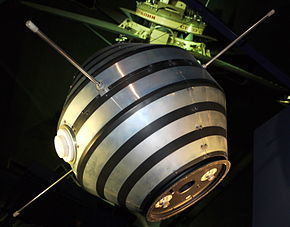On November 26th, 1965, the French Space Program, today known as CNES, launch its first satellite, named Asterix 1 from Hammaguir, Algeria. By launching Asterix 1, France became the third nation in history to launch its own satellite and sixth country to have a satellite in orbit. Being the third country to launch its own satellite meant that France was the first nation other than the US and the USSR to utilize of its own launch vehicle.
In the beginning, this satellite was named A-1, which meant it was to be the French Army’s first satellite, but the satellite was renamed after the popular French comics character Astérix. The completed Asterix 1 satellite weighed 42 kilograms at launch with a distinctive shape featuring striped fiberglass spinning-top that was half a meter in diameter. There were black stripes added to the fiberglass to provide passive thermal control and the mission of the satellite was to test the French Diamant rocket as well as take measurements of the ionosphere. After launch, the satellite was active for 2 consecutive days before ceasing transmission. However, due to its relatively high orbit altitude, Asterix 1 is not expected to re-enter Earth’s atmosphere for several centuries.
How French space program has evolved?
The French have always had an interest in spaceflight, as shown by the writings of the 1664 Gobelins tapestry representing a space rocket, Jules the 1865 Jules Verne novel De la terre à la lune, and the 1902 George Méliès movie Voyage dans la lune. {Transition Before 1961 founding of CNES}
Before launching its first Satellite, French President Charles de Gaulle established CNES, National Centre for Space Studies, in 1961. An interesting side note is that in 1963, CNES launched a cat into space, which made CNES the 1st and only space agency to successfully launch a cat into space.
As CNES has evolved, the space agency has concentrated its effort on five areas of expertise as shown below.
- Access to space
- Civil applications of space
- Sustainable development
- Science and technology research
- Security and defense
CNES has benefitted from a large budget, of several billion Euros per year, which makes the agency the best funded agency in Europe. This funding has allowed CNES to focus its effort on many space programs such as ….
Impact of French Space Program On Scientific Community
CNES continues to be a major space program on the world stage by providing support for other space programs such as NASA and JAXS with missions to study the Sun, Mercury, and Earth, plus provide assistance on other missions.
Moreover, the French contributions to the ISS is providing French scientists the opportunity to perform original experiments in areas such as microgravity. Other areas of research include studying formation flying, GPS, and reconnaissance satellites.
When studying formation flying, CNES utilizes a technique whereby several satellites fly components of a much heavier and complex instrument in a close and tightly-controlled configuration, with satellites being as close as tens of meters apart. This research in formation flying is part of the Swedish-led PRISMA project.

Be the first to comment on "55th Anniversary Of France’s First Satellite"